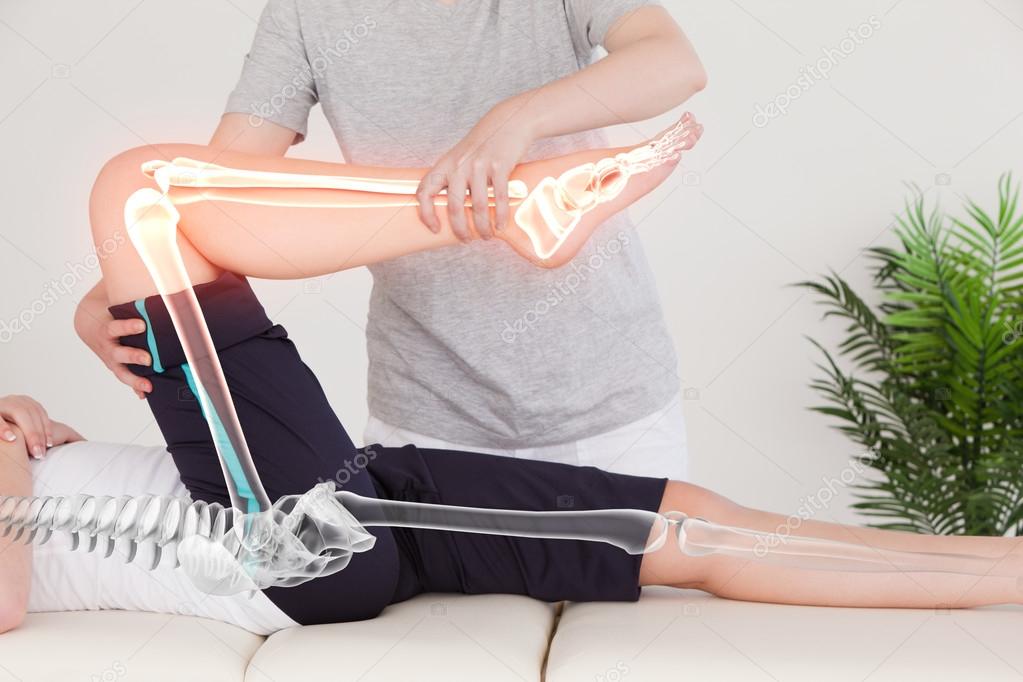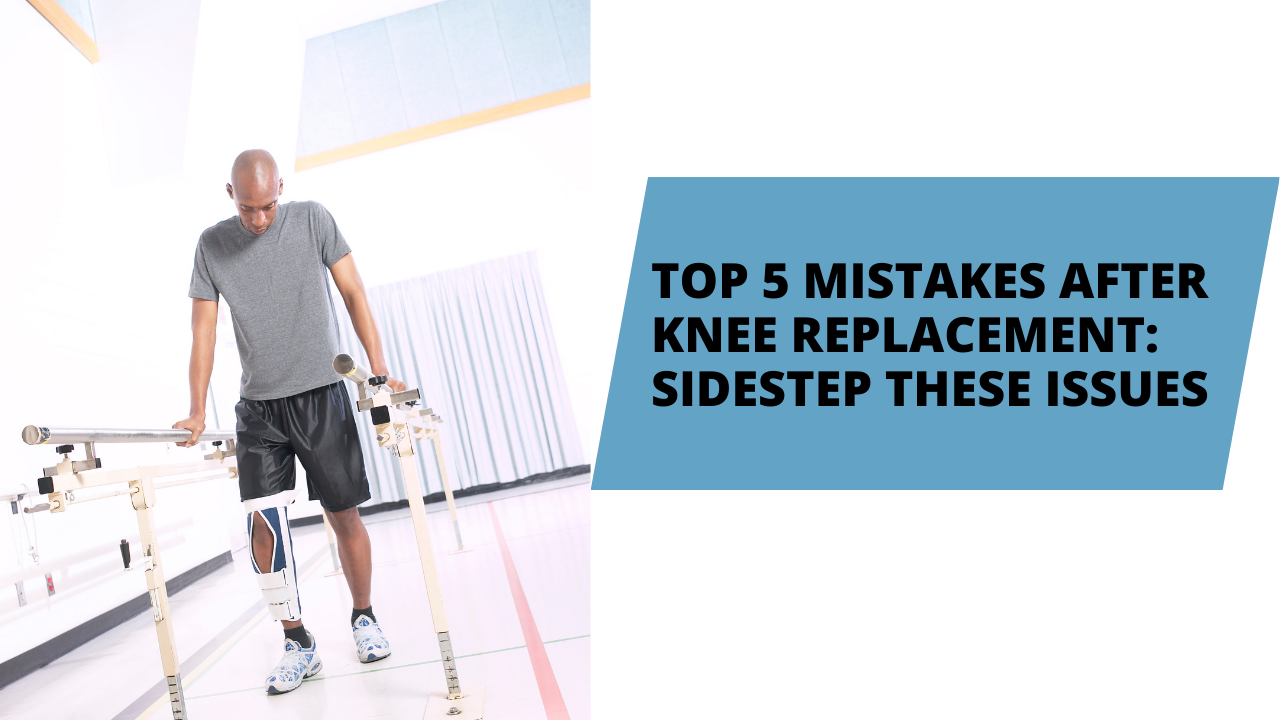Table of Contents
This article on the top 5 mistakes after knee replacement will spill some cool beans. What Is Knee Replacement Surgery (Knee Arthroplasty)? Given that there are approximately 600,000 knee replacement surgeries performed every year where some individuals rely heavily on this procedure to rectify their knee issues. But it is not as simple to determine that the higher success rates of knee replacement surgery depend on a successful surgery, with reliability associated with recovery stage also being part of the game. Therefore, it becomes very crucial to understand the top 5 mistakes after knee replacement on how we can easily avoid them for better recovery. However, a large number of patients end up making mistakes during their recovery which impairs the final result! In this article, we will be talking about the best.
1. Neglecting Physical Therapy

The Mistake: A common mistake that many patients make following knee replacement surgery is to avoid physical therapy. Some patients are more inclined to exercise than others who choose different perspectives such as conspiring in the corner skeletal King Kong or find that it takes too much time; these people may feel like they already regain function well enough, and physical therapy is not necessary.
The Consequences: Not engaging in PT will slow the healing process, cause you to become stiff and potentially lose range of motion. Wounds may take longer to heal or scar tissue could form making your recovery even more extended If it is ambitious and lacks proper care, the knee joint may not fully recover functionality or strength – so recovery time could get even longer.
How to Avoid it
- It is vital to stick to the physical remedy regimen that your bodily therapist or health care provider has advocated.
- The person have to perform the advised physical games at home and display as much as all scheduled classes. Physical therapists are qualified to help patients in progressively gaining greater strength, flexibility, and range of movement via safe and green rehabilitation.
- Talk to your therapist if soreness prevents you from collaborating inside the sporting events; they could modify the habitual or advocate pain remedy techniques.
- Excessive Use of the New Knee
The Error Even at the same time as it is vital that sufferers exercising following knee alternative surgery, some may additionally overestimate their abilities and push themselves too hard, too fast. This can involve engaging in strenuous weightlifting and jogging earlier than their knee heals completely from the
2. Overexerting the New Knee
The Mistake: While it’s far vital to have interaction in bodily interest after knee substitute surgical procedure, some sufferers might also overestimate their talents and push themselves too hard, too quickly. This can consist of activities like heavy weight lifting, and going for walks, before their knee is completely healed from the recuperation.
The Consequences: When we talk about overexertion, here it means we do not listen to our body. We should always listen to our body, when we try to go beyond our body limit, this will never result in a good way. Trying to do things more than what your doctor said will lead to pain, swelling, and damage to the new knee joint. This can also result in complications such as loosening the implant, fracture or other injuries that can cause additional surgery.
How to Avoid it
- To avoid this person should follow the surgeon’s guidelines regarding activity levels and restrictions. Initially start with low-impact exercises such as walking, swimming, or cycling, and gradually increase the intensity and duration as per your healthcare advice.
- The main thing is to listen to your body and avoid activities that cause pain or discomfort. It’s important to find a balance between staying active and giving your knee sufficient time to heal.
3. Ignoring Pain and Swelling
The Mistake: Some patients may ignore persistent pain and swelling, assuming it is a normal part of the recovery process. Others might do not bother to take prescribed pain medications due to concerns about addiction or side effects.
The Consequences: Ignoring pain and swelling can indicate underlying issues such as infection, blood clots, or improper implant alignment. Ignoring pain can also hinder participation in physical therapy, further delaying recovery and leading to complications.
How to Avoid it
- Pay attention to your body and report any unusual or persistent pain and swelling to your healthcare provider.
- Follow the plan, which may include medications, ice packs, and elevation of the leg. If you have concerns about pain medication, discuss alternative options with your doctor.
4. Not Adhering to Post-Operative Instructions
The Mistake: After the knee replacement surgery, patients are provided with specific post-operative instructions regarding wound care, medication, activity restrictions, and follow-up appointments. If one can ignore and not follow these instructions, it can jeopardize the healing process.
The Consequences: Non-compliance with post-operative care can lead to infections, delayed healing, and complications that may require additional medical intervention. For example, not keeping the surgical wound clean and dry can increase the risk of infection, while failing to attend follow-up appointments may result in undetected issues.
How to Avoid it
- Carefully follow all post-operative instructions provided by your surgeon and healthcare team. Keep the surgical site clean and dry, take medications as prescribed, and attend all follow-up appointments.
- If you are unsure about any aspect of your post-operative care, do not hesitate to ask your healthcare provider for clarification.
5. Being Inactive
The Mistake: The mistake of being too stationary is a mistake on the other end of the overexertion spectrum. Some patients may be too careful and not move their knees for fear of harm, thereby resulting in prolonged immobility.
The Consequences: Continuous inactive living causes muscle weakness, joint inflexibility, decreased blood flow increasing the likelihood of blood clot formation. Further it decelerates overall recovery leading to delayed return to regular activities.
How to Avoid it
- Incorporate gentle, low-impact activities into your daily routine as soon as recommended by your healthcare provider.
- Even simple activities such as walking short distances, performing range-of-motion exercises, and engaging in light stretching can promote healing and prevent complications. Gradually increase your activity level as your strength and mobility improve.
The following is a list of the top 5 mistakes made by patients after knee replacement and how to avoid them. Speeding up your healing process and achieving optimal results after a knee replacement surgery entails finding the right balance between rest and activity, adhering to medical advice as well as taking a proactive approach to rehabilitation. By eluding these frequent mistakes, patients can hasten their recovery pace and achieve the maximum outcome possible.
Key Takeaways:
- Commit to Physical Therapy: Follow your prescribed physical therapy regimen diligently to ensure optimal recovery.
- Balance Activity and Rest: Engage in low-impact exercises and gradually increase activity levels, avoiding overexertion.
- Manage Pain and Swelling: Address any persistent pain or swelling with your healthcare provider to prevent complications.
- Follow Post-Operative Instructions: Adhere to wound care, medication, and follow-up guidelines to promote healing.
- Stay Active: Incorporate gentle activities into your routine to prevent stiffness and muscle weakness.
By being mindful of these factors, patients can support their recovery and return to their daily activities with improved knee function and reduced pain.

